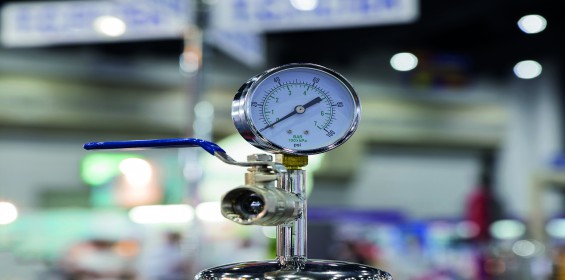Pressure Systems Safety Regulations (PSSR 2000): a training overview
Published: 14 February, 2020
BCAS’ Pressure Systems Safety Regulations (PSSR 2000) compliance courses cover everything people need to know about this key piece of legislation for the compressed air industry. To understand your obligations, BCAS training and development officer, Roy Brooks, has put together an overview of the legislation and the top ten reasons to keep up to speed.
The scope of PSSR 2000 covers a range of activities concerning compressed air equipment. All companies that fall under the criteria of the UK Regulations must have various parts of the pressure system inspected and certified, while owners and users must also document repairs and modifications to ensure safety.
New designs for any pressure system must be approved, then constructed and installed safely. Maintenance and training are key parts of PSSR 2000 to ensure systems are “maintained so as to prevent danger” and that all parties involved in operating the systems understands any risks and emergency procedures.
Why was PSSR 2000 introduced?
PSSR 2000 was introduced to “ensure the safe operation of the installed system”, by ensuring “that system failure can be reasonably foreseen and catered for in respect of the ‘unintended’ release of stored energy”.
Who needs to abide by PSSR 2000?
There are two responsible parties under PSSR 2000 relating to aspects of the system;
Mobile, Hired or Leased Systems
For systems that are mobile, hired or leased, the original owner of the system has full responsibility under the regulations.
Installed Systems
For systems that are installed, any user of a system has full responsibility under the regulations.
In order to achieve compliance, the procedure is normally outsourced to a “competent person body” who supply a qualified professional with the competence and skills required to understand the various specifics of the regulation.
What does the PSSR 2000 actually cover?
The Pressure Systems Safety Regulations 2000:128 cover a range of different applications and systems, including;
• Any systems using any gases over 0.5 BarG (7.25psiG) where the installation has a Pressure Vessel
• Any system that uses steam at any pressure
• Any system that uses any form of liquefied gas
• Any high-pressure hot water systems running above 110oc
• Any refrigeration systems using motors larger than 25 kilowatts.
Under PSSR 2000, a pressure system comprises normally of a pressure vessel, protective devices and pipework. In addition, under PSSR 2000, pipework is defined as everything that comprises a pressure system other than the pressure vessel and protective devices.
The ten reasons that understanding PSSR 2000 is important to you
If you’re a maintenance manager, health & safety manager, plant manager or owner, understanding how to ensure your compliance with PSSR 2000 is vital. We’ve listed the top ten reasons that you should ensure a full and accurate understanding of PSSR 2000 below:
1. Understand the risks and consequences of falling foul of the legislation
2. Understand the need for correct information and marking of pressure equipment
3. Understand which pressure systems fall under all the regulations and those that don’t
4. Understand that under regulation 8 of PSSR 2000 it is the owner/user’s responsibility to ensure a written scheme of examination is produced by a competent person.
5. Understand examination/inspection under regulation 9, and who is competent to complete this work.
6. Understand that not all WSE’s available are necessarily comprehensive enough to cover all pressure systems regulations.
7. Understand that a WSE on the pressure vessels alone is not always a satisfactory document.
8. Understand Safe operating Limits (SOL)
9. Understand the importance of maintenance
10. Understand the need for the keeping of records
To find out more about BCAS’ PSSR 2000 training module, please contact: training@bcas.org.uk







